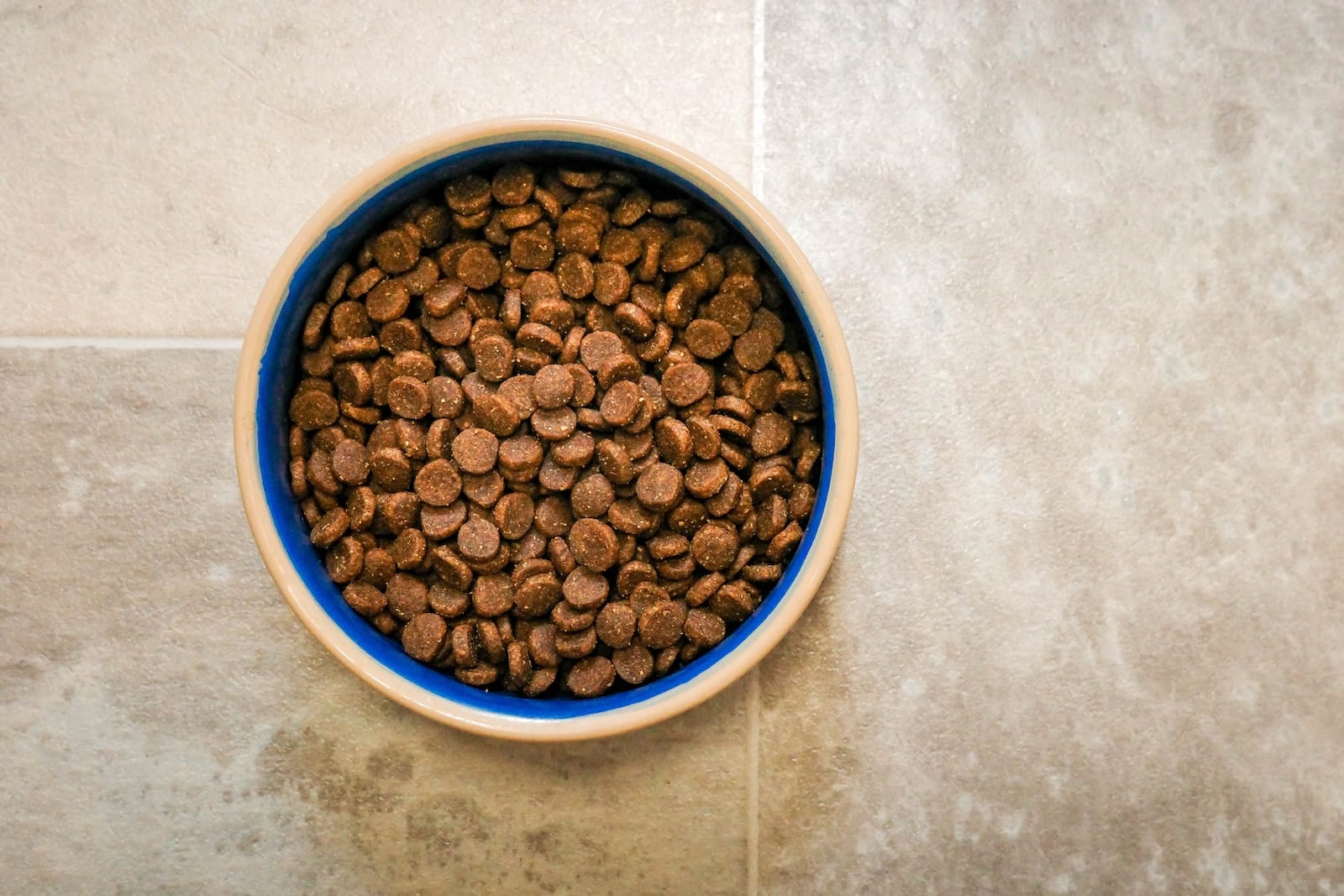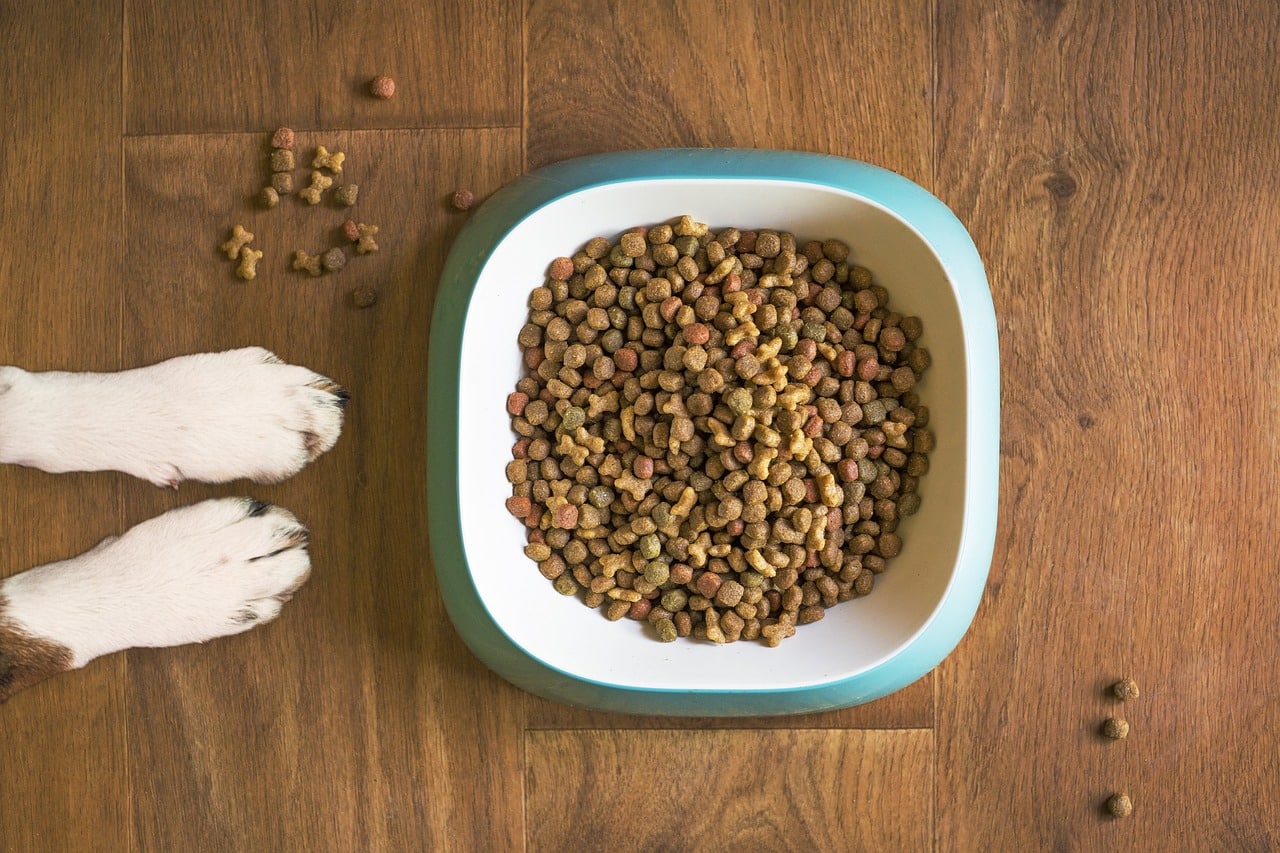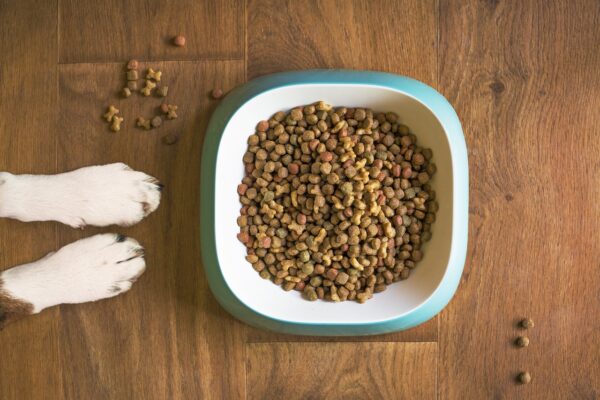Today’s exciting topic is dog food storage. I know what you’re thinking: what could possibly be interesting about that?
Well, considering the high priority placed on food by the average dog, and the relatively low amount of storage space in the average Dogster’s kitchen, there’s actually quite a lot to talk about.
With the indiscriminate way they go after garbage in the street, you’d think most dogs wouldn’t be finicky when it comes to leftovers. But you’d be wrong. The palatability of leftovers all depends on how they were stored.
There’s no shortage of plastic lids designed to seal open pet-food cans. They’re sold cheap at pet food stores and even given away as promotional items by pet food manufacturers. And yet, when canned pet food leftovers are stored in the cans they came in, with or without these plastic lids, they lose their flavor to the point that finicky pets will have none of them. Never, ever store leftover canned food in the can – it’s a terrible waste of money and resources that no one can afford.
Instead, make sure you keep good-quality refrigerator containers on hand that you dedicate to the purpose of pet food storage. Plastic containers are a step up from storing pet food in cans, but they’re not ideal because they leach chemicals into the foods that are stored in them.
Glass containers with plastic lids are definitely the way to go. Frigoverre makes excellent refrigerator glassware sets (pictured above) whose components nest conveniently when not in use. They’re available at Crate & Barrel stores or online. Anchor Hocking also makes attractive, functional refrigerator glassware, available at Sur La Table.
When you transfer pet-food leftovers from a can or bowl to aglass container, give the food a liberal sprinkle of ground cinnamon before you seal the plastic lid. Cinnamon is an excellent spice for Dogsters to keep in the pantry, for reasons explained here. An excellent fringe benefit is that this delicious, good-for-you spice helps slow down bacterial growth to prevent food spoilage.

Now, about storing kibble: Just put a giant plastic clip on the bag after you open it, right? Wrong.
Again, there’s no shortage of cute plastic pet food clips out there on the market. But these clips do nothing to change the fact that, unless it comes in a re-sealable bag, dry dog food goes stale once the bag is opened. So do treats. Large bags of kibble don’t come in resealable bags. And open bags of kibble attract insects.
Think about it: Would you want to eat stale breakfast cereal or chips that a fly might have landed on? Well, then, why should your dog have to?
OK, so why not transfer the kibble to a plastic pet food storage bin? For the same reason we’d rather you didn’t store canned food in plastic refrigerator containers: plastic is not a totally safe food storage material. Besides, one determined dog can easily chew his or her way through a plastic pet food storage bin, inhaling its contents while you’re not looking.
Plus, if you’re a design hound for whom appearances count, plastic pet-food storage bins are a serious eyesore.
Some folks stash open kibble bagsin the refrigerator, but this eats up a lot of precious space in an already-crowded kitchen appliance.
Happily, there are clever kibble-storage options that won’t diminish the aesthetic appeal of your kitchen or pantry. Consider handsome powder-coated steel canisters marked “Dog Food” by Harry Barker. These are as attractive as they are functional and food-safe, and they come with a handy aluminum scoop.
If, like me, you abhor aluminum – its use has been linked to Alzheimer’s disease and other forms of dementia -you can find a non-food purpose for the aluminum scoop and purchase a 6-ounce stainless steel scoop for less than $2 here.
The only downside to storing kibble in metal canisters is you can’t see how much you have left. This is why I use my stainless-steel scoop to decant large bags of K9 kibble into glass jars.
Ball mason jars, available in 6-packs here, hold 32 ounces and look cheerful lined up along my kitchen shelves, plus I always know how much (or how little) I have left, so I never come up short when it’s time to feed the four-footed troops. There’s nothing I hate more than keeping my dogs waiting while I make a frantic, last-minute run to the pet-supply store just as it’s about to close! The handsome Italian version of this jar, by Quattro Stagioni, available at The Container Store, holds 34 ounces.
Also great are one-gallon cracker jars. These large, square, wide-mouthed glass containers by Anchor Hocking, available here, are big enough to hold your kibble plus your handy scoop. As someone who constantly misplacese this important dog-dinner-serving tool, I think it’s a great help to have the scoop pre-staged where it’s needed most.
If you prefer a more old-fashioned look, decant your kibble into charming, European-style hermetic canning jars with rubber gaskets. These have the added benefit of wider mouths, making the kibble-decanting chore go faster.
Do you have any helpful tips for pet-food storage? Please share them in the comments!
Featured Image Credit: mattycoulton, Pixabay










